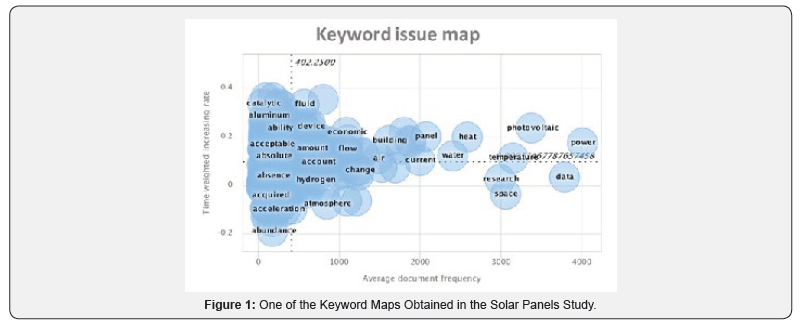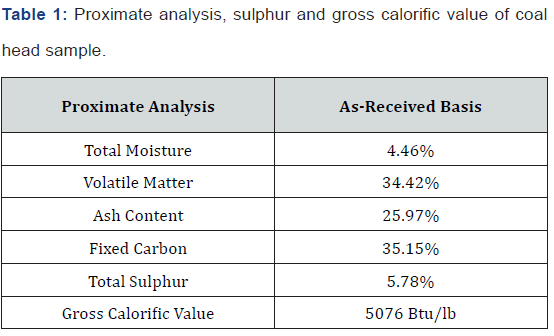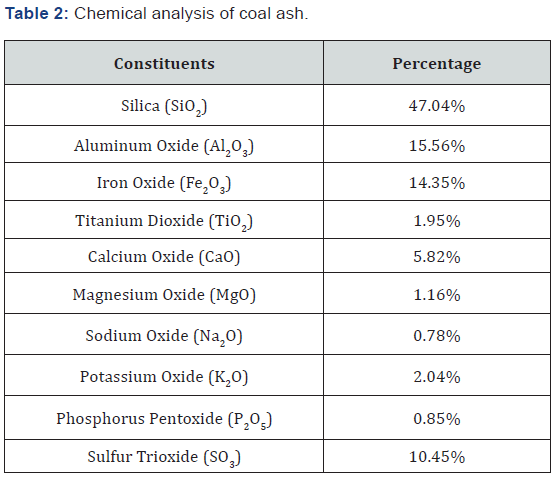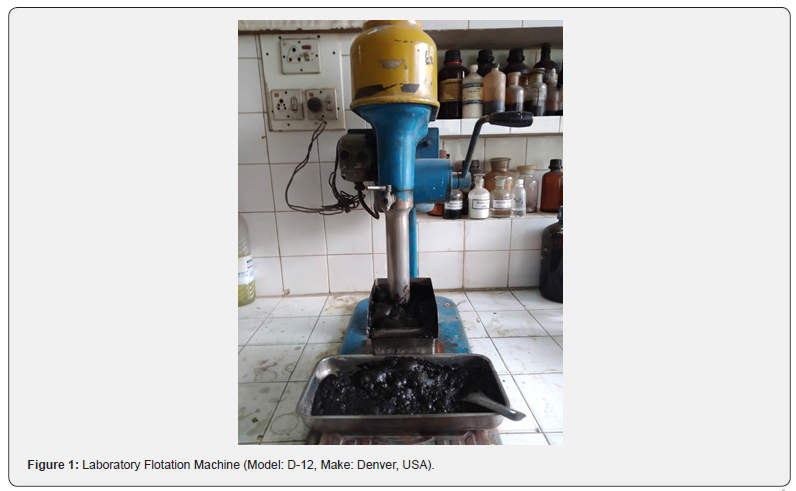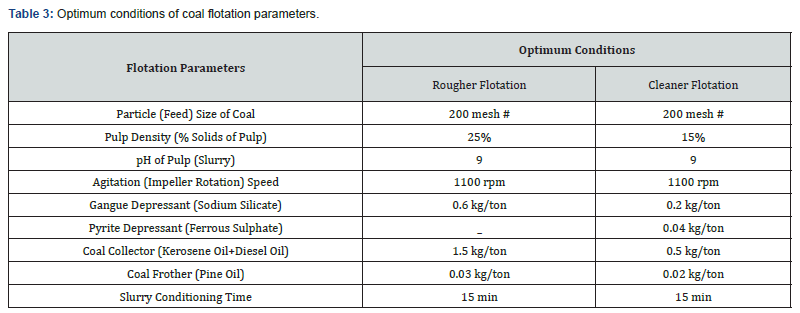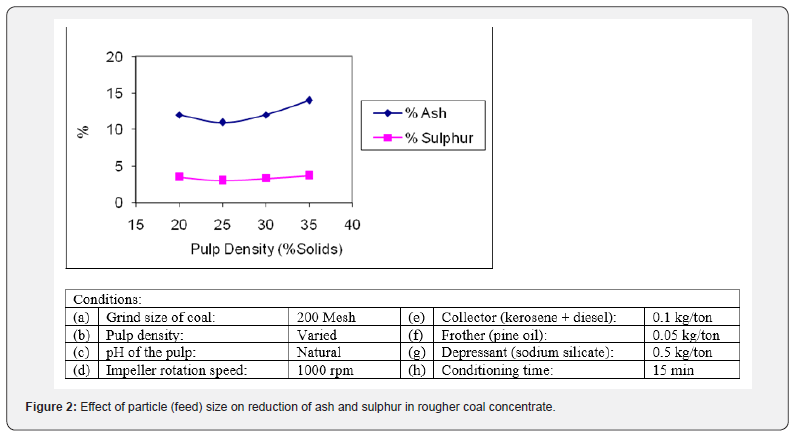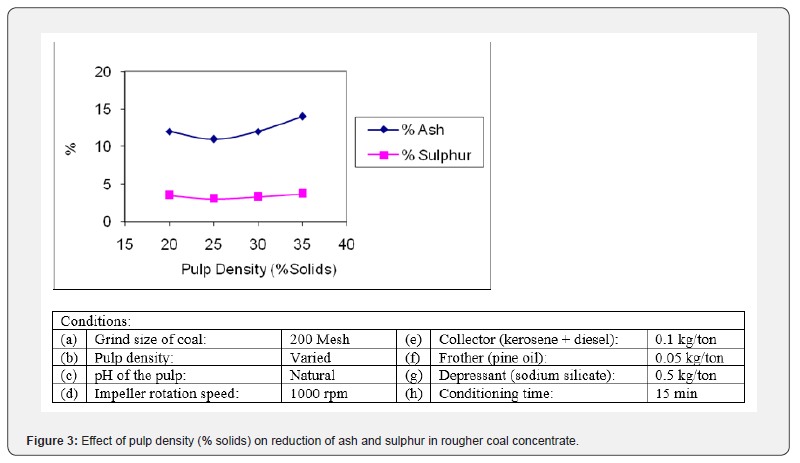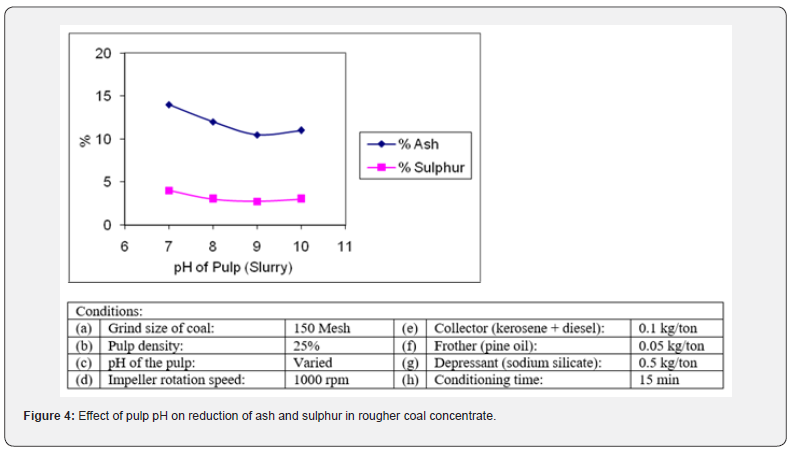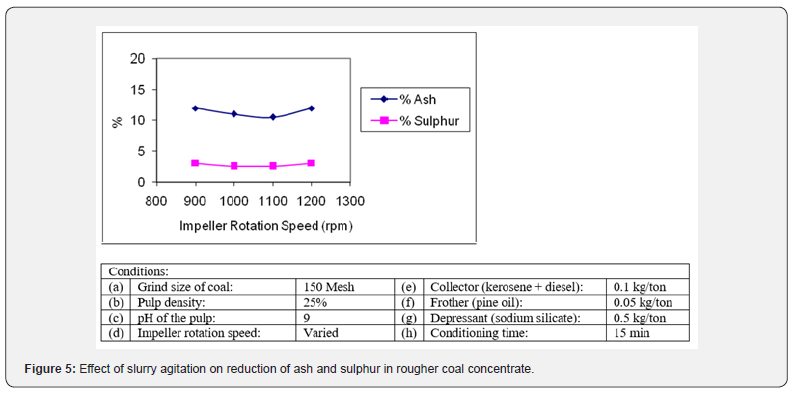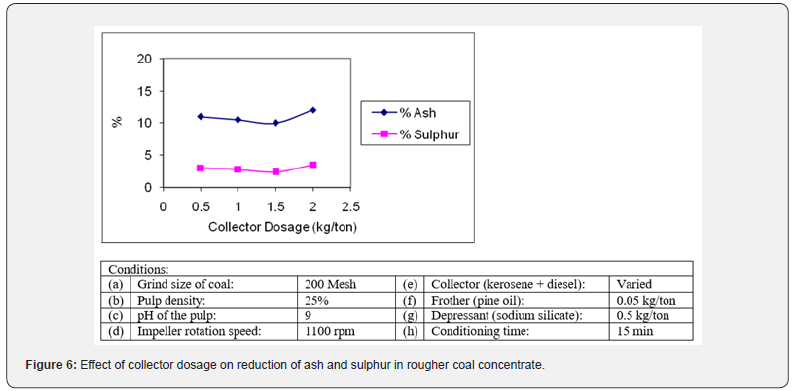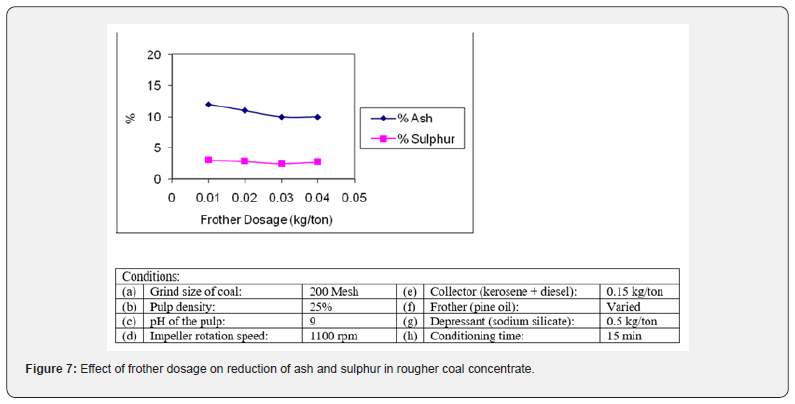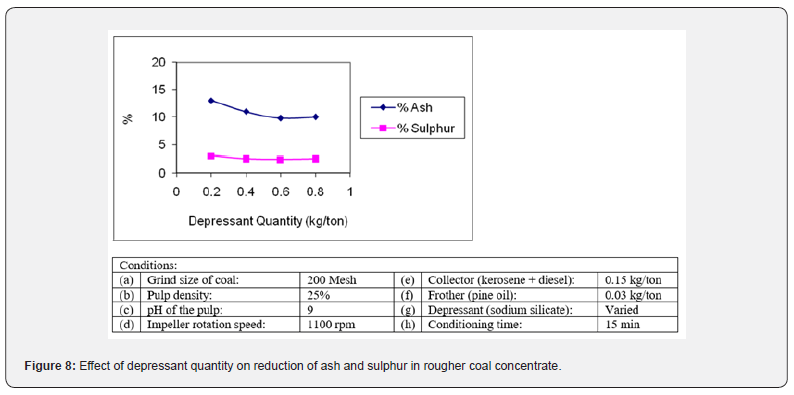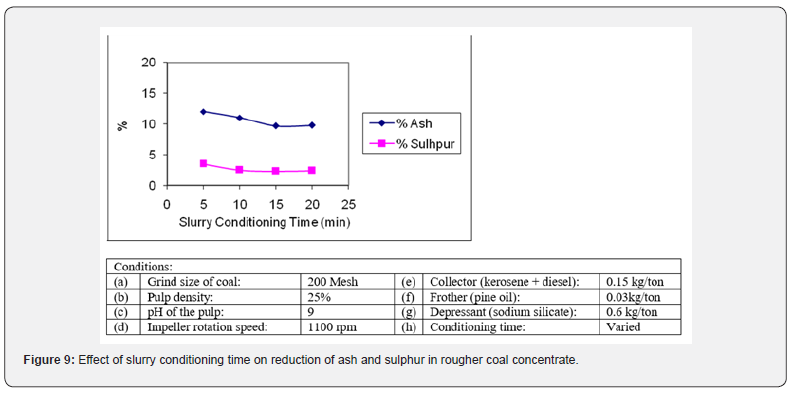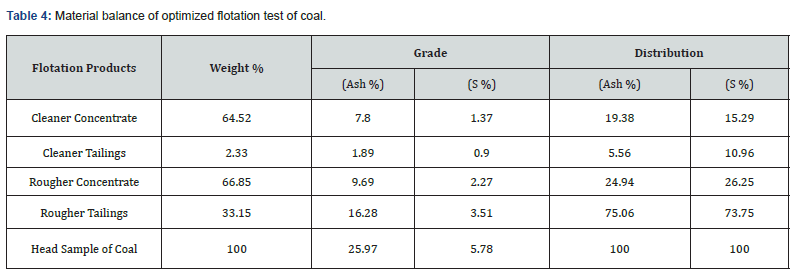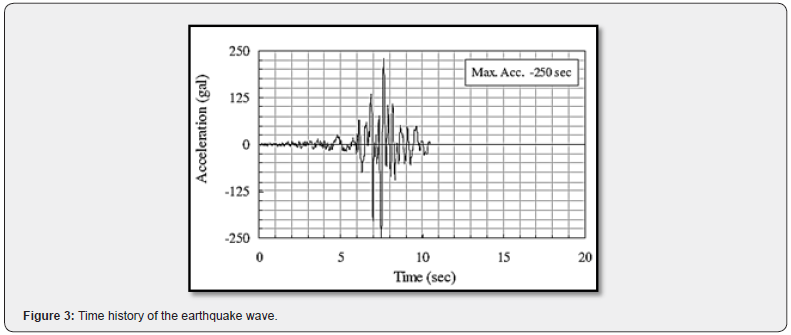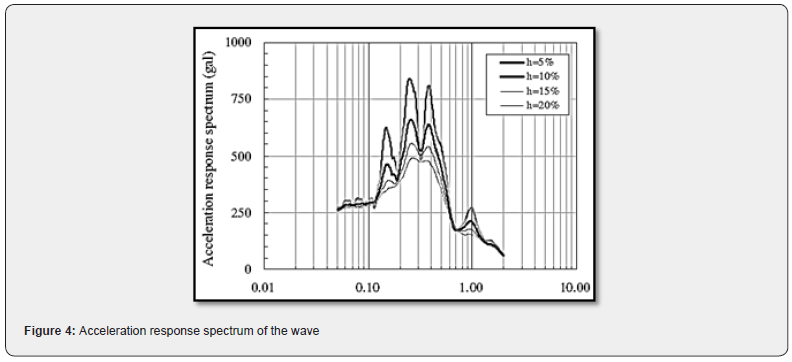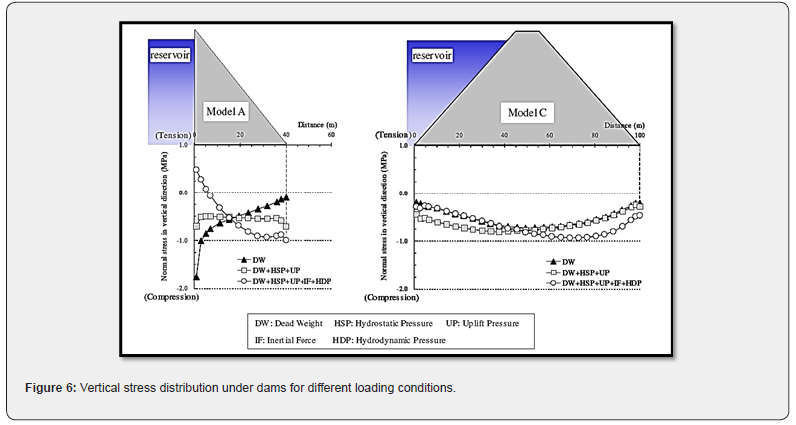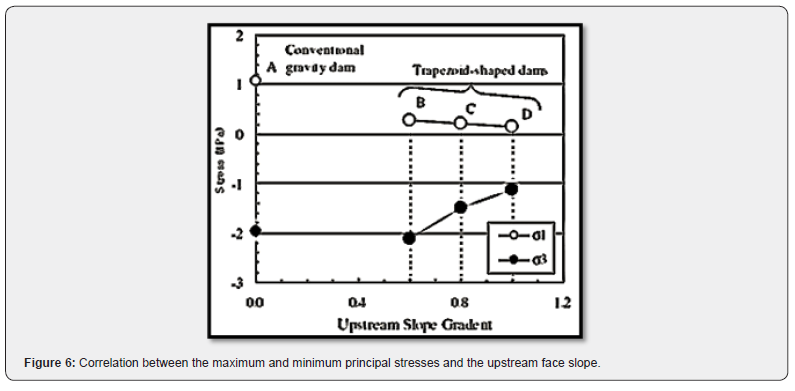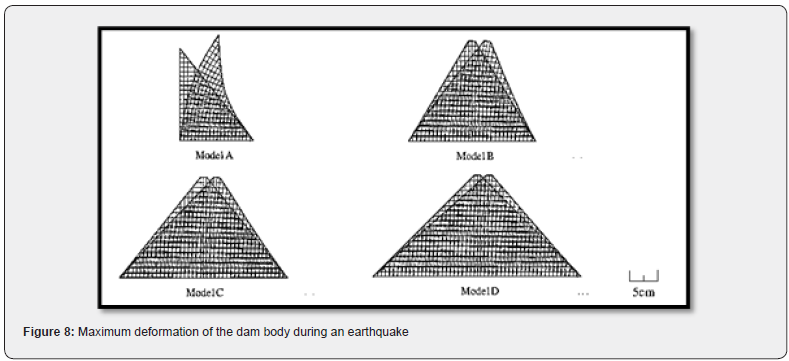Palliative Medicine & Care - Juniper Publishers
Background and purpose: A single-center
observational study involved the assessment of pain in palliative care
patients PC who required surgery. The question was asked: How does acute
pain influence the behavioral pain perception in palliative patients
treated with opioid drugs before and after surgery.
Materials and methods: Patients who were
qualified for surgical procedure and diagnosed with a disease qualifying
for palliative treatment were followed up. Acute pain therapy was
applied in the ward as in all cardiac surgeries. The diagnosis in the
applied pain therapy was not distinguished due to the coexisting
palliative disease. All patients received pain medication according to
the same schedule. The survey assessed the level of pain sensation and
the accompanying emotional states such as anxiety, fear and depression.
The standardized and own type questionaries’ has been used.
Results: Based on the analysis of the answers
provided, 30% of respondents PC rated their pain, assessed on the 4th
day at 7/10, i.e. severe. More than half of the respondents replied that
they had new pain ailments. Patients indicated more than one location
of the intensity of postoperative pain, but the highest intensity of
pain was found at the operated site. The patients indicated the
occurrence of anxiety and there was no difference between the anxiety
before and after the surgery. When expressed about pain, it can be seen
that the elderly complained less about pain than younger people.
Discussion: The conducted studies of
behavioural pain assessment in cardiac surgery patients indicate that
the overall health condition of the patient should be taken into account
in the assessment of pain. It has been shown that patients who have had
palliative disease are prone to pain after cardiac surgery procedures
and that conventional pain treatment in these patients is not
sufficient. Analysis of the collected data provided information on the
use of painkillers, pain assessment and how patients cope with emotions
after surgery during palliative treatment. The choice of painkillers
depends primarily on: the type of pain, its severity, as well as the
length of pharmacotherapy and whether the previous analgesic therapy and
the drugs used reduced the pain.
Palliative patients are a group particularly exposed
to pain. Post-operative pain in this condition caused by damage to
tissues, intensified by perioperative stress, causes an additional
emotional and behavioural response of the system to surgical actions
[1]. Regardless of the primary disease, pain after cardiac surgery, and
in particular after midline sternotomy, is a strong, critically related
to proper ventilation and haemostasis of the circulatory
system. Acute pain caused by surgery forces an unfavorable position,
which is difficult for the proper respiratory mechanics, leads to
atelectasis, worsening of postoperative complications and changes in the
perception of pain stimuli, including persistent chronic pain [2].
According to the literature data, properly treated patients without
additional comorbidities stop experiencing acute pain a few days after
the procedure. On the other hand, the lack of adequate pain treatment
after surgery may cause pain to persist for many months after the
patient’s discharge [3]. Palliative
patients operating in cardiac surgery departments constitute
a special, diverse group of patients. Most often, operations are
performed on them because of the primary palliative disease
or diseases that occurred during palliative treatment. They are
in each of these cases particularly prone to pain and are usually
treated with anti-pain medications before surgery; therefore,
postoperative pain perception may be different in this group of
patients. Additional acute pain, insufficiently controlled, has an
impact on the partial and / or complete disability of the patient.
It is a problem that, if it occurs, will intensify the occurrence of
chronic and persistent pain, which causes escalation of the doses
of anti-pain medications and limiting the independence and
comfort of life [3,4].
The choice of the drug, as well as its dosage, depends on the
intensity of pain and is based on the use of analgesics of increasing
effectiveness, as well as supplementing the action of analgesics [5].
According to WHO recommendations, drugs are used in palliative
patients according to the analgesic ladder [6]. The first step of
the analgesic ladder covers the treatment of low intensity pain
on the numerical scale (NRS). In such cases, it is recommended
to use non-opioid analgesics (NSPB), which include non-steroidal
anti-inflammatory drugs (NSAIDs) as well as paracetamol
and metamizole. NSAIDs have an analgesic effect, especially
in nociceptive pain. They are more effective than paracetamol
and metamizole in counteracting inflammatory pain. In order
to improve the effectiveness of analgesia, it is recommended to
combine NSAIDs with paracetamol, but never to combine two
NSAIDs, as well as paracetamol and metamizole, because they act
on similar cyclooxygenase isoforms. NLPB should be administered
in doses and at intervals that guarantee effective analgesia. In the
case of NSAIDs, the choice of dose and timing of administration is
dependent on the drug selected. On the other hand, paracetamol
is used in regular 4-6 hour intervals. In the case of NSAIDs, it is
worth remembering that drugs have their effect on the activity of
COX-1 and COX-2, which may cause differences in the profile of
their analgesic effects and the profile of side effects [7].
The second step of the WHO analgesic ladder covers the
treatment of pain with a severity of> 4-6. The transition from
the 1st to the 2nd and 3nd step of the ladder occurs most often due
to the ineffectiveness of drugs in the 1st step of the ladder or in
the case of increasing pain associated with the disease [8]. In the
case of using tramadol, it should be remembered that due to the
serotoninergic mechanism of action of these drugs, they should
not be combined with other drugs enhancing the transmission
of serotoninergic system due to the risk of serotonin syndrome.
Drugs from the 2nd rung of the analgesic ladder should not be
combined [9].
After surgery, pain often reduces the patient’s satisfaction with
the procedure performed. Pain delays the patient’s mobilization,
increases the incidence of postoperative complications and
increases mortality [10]. In patients staying in the postoperative
ward, it can cause depression and excessive excitability, fear, and
fear of their own health in the future [10]. It is believed that the
emotions accompanying the patient have an evident influence on
the perception of pain [11]. Patients with additional anxiety and
fear experience worse postoperative pain [11].
In the preparatory management of postoperative pain,
the general assumptions, recommendations for education and
planning of perioperative management in pain therapy after
cardiac surgery should be taken into account. It is important that
the patient is provided with knowledge about the possibilities
of pain treatment [12]. The psychological sensations of a pain
stimulus consist of closely related stages. The first stage is
sensory-discriminatory experience, while the second stage
causes a reaction of pain with a small share of other functions. In
the first two stages, it is possible to assess using pain scales such
as VAS or NRS. The next stage is the suffering stage, it is related
to the patient’s feelings and views on pain [9]. The final stage is
behavioral pain expression, also known as conservative pain. This
stage determines the patient’s motor activities. The evaluation of
the emotions of anxiety and fear of the second stage was carried
out on the basis of the answers to the questions included in the
survey.
The study posed the question: is pain sufficiently measured
in palliative patients if they are treated according to the regimen
typical for patients without palliative disease? Does pain depend
on the presence of pre-operative anxiety and depression in
postoperative patients? In addition, it was decided to investigate
whether the type of pain ailments changes the expression of
emotions such as fear, anxiety, anxiety in these patients, and the
quality of analgesia was assessed, allowing for the performance
of respiratory therapy and other physiotherapeutic procedures.
The method of diagnostic survey was used in the study. The
survey was conducted anonymously. It was carried out among
patients staying in the postoperative ward of the Cardiac Surgery
Clinic of the University Teaching Hospital in Białystok. The study
involved 50 patients. The study included patients who were on
day 4 after surgery. The study included patients with diseases
eligible for elective surgery and who were treated palliatively
prior to surgery. The research tool was a questionnaire containing
questions, as well as elements of the VAS, NRS, PHHPS scale, and
questions related to the coexistence of emotions such as anxiety,
depression.
The survey was divided into two parts. The first part is sociogeographic
questions, while the second is specific questions
about pain assessment. The questions contained in it concerned
the patient’s well-being and the assessment of the severity of
pain after cardiac surgery. The respondents were informed about the purpose and scope of the study and were presented with a
consent form to participate in the study. Patients who were aware,
in logical verbal contact, were treated on an outpatient basis and
in hospital after procedures such as:
a) Patients undergoing cardiac surgery without circulation
b) Patients after operations in extracorporeal circulation
not longer than 3 hours
c) Postoperative pain measurement was based on features
such as pain intensity, duration and location.
d) Pain was assessed using the VAS and NRS scales.
VAS (Visual Analogue Scale) is a visual scale. The level of
perceived pain is marked on a straight horizontal line, and the
researcher or subject determines the intensity of pain. When
assessing pain, the researcher uses the scale reproduction based
on the marked points on the line to indicate no pain symptoms
and the strongest pain that the patient can imagine [2,5,6]. NRS
Numerical scale - on this scale, pain is rated from 0 to 10 in the
11-point range, where 0 is assigned the sentence “I do not feel
pain at all” and 10 is “the worst pain that cannot be imagined”
[7,8].
Prince Henry Hospital Pain Score - PHHPS - the scale is
applicable after thoracic surgery, cardio surgery and epigastric
surgery [2]. 0 - no pain when coughing1 - pain when coughing,
but not with deep breathing2 - pain only with deep breathing3 -
slight pain at rest4 - severe pain at rest All patients were treated
for pain according to PTBB (Polish Association for the Study of
Pain) guidelines published on 2018 [6]. Regular opioid infusion
of short-acting remifentanil was used for surgery, and patients
received fractionated doses of morphine, paracetamol, and
NSAIDs after surgery.
The statistical evaluation of the work was performed using
the statistics program, on the basis of the questionnaires and the
applied VAS scale and the numerical scale [9]. Sociologist E. Babbie
claims that a survey is the best method to gather information in a
larger group of respondents. It perfectly describes the collected
data on respondents [13]. A questionnaire was used to conduct
the research. According to the definition of Bauman and Plich,
it is “a technique of collecting information consisting in filling
out a questionnaire, most often by the respondent, of special
questionnaires, usually with a high degree of standardization”
[14].
In the group of respondents, new pain ailments occurred in
25 people. Such feelings were not experienced by a smaller group
of respondents, as many as 20 respondents. 5 people remained
neutral. In the further part of the questionnaire, it was found
that 34% of patients report severe pain after surgery, there were
affirmative responses, while 40% of respondents stated that they
did not experience postoperative pain, and the remaining patients
were unable to provide answers. Additionally, when asked about
the severity of other pain ailments, as many as 35 respondents
out of 50 provided information that other pain syndromes had
worsened. On the other hand, as many as 10 respondents gave a
negative answer. 5 respondents remained neutral. The results are
shown below Figure 1 [15-17].
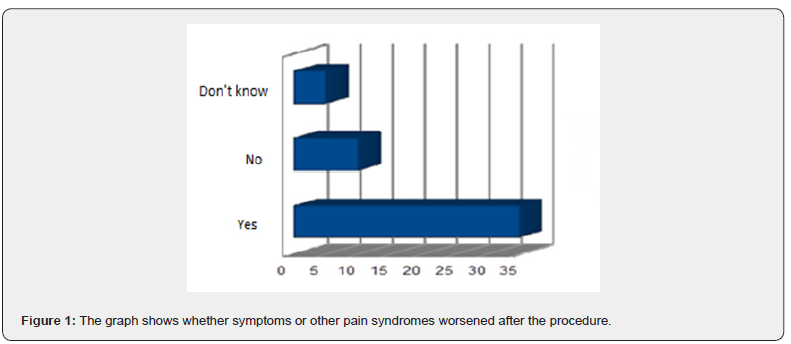
A large group of respondents were people for whom pain
hindered their daily functioning. More than half of the respondents,
i.e. 28 people, answered that pain is difficult in everyday life. No
problems in everyday functioning occurred in 10 people and 12
people chose the answer “I don’t know.” The result is shown below
Figure 2 [18].

A large group were also people who felt fear and anxiety
before the surgery, there were 35 of them, which constitutes 70%.
Before the surgery, 13 people said that fear and anxiety had no
effect on their well-being. Two people answered the question “I
don’t know”. To the question “Did the pain cause you fear unknown
so far?” The answers among the respondents were as follows:
as many as 40 people answered this question in the affirmative,
while 10% answered negative (Figure 3) [19].

Among the respondents, 40 respondents know about the
possibility of alleviating postoperative pain. No information on
this topic appeared in 5 people. The least numerous answers were
“I don’t know” [20] (Figures 4-7).
The study answered the questions that standard pain
management used in all cardiac surgery patients is not adequate
for palliative patients. They need more intensive analgesic therapy.
Standard pain therapy used routinely in the ward is not sufficient
for palliative patients. Patients suffer from pain especially
between 2 and 4 days after the procedure. The question whether
surgery and pain increase depression in palliative patients has not
been resolved. The stay in the ward and the pain will increase the
anxiety felt by the patients [21-23].
Pain and surgery have not been shown to influence
depression when assessed shortly after surgery. The greatest pain
was recorded on the fourth day after the cardiac surgery. This is due to the fact that the respondents suffer from postoperative
pain related to the performed procedure and it is perceived
differently than in non-palliative patients who, according to the
literature data, have the worst pain on the 2nd day after surgery.
Pain is related to the place where the drains are led out or where
the wound is cut. Pain intensity in cardiac surgery is the highest
among all the types of pain in surgery described so far [24-27].
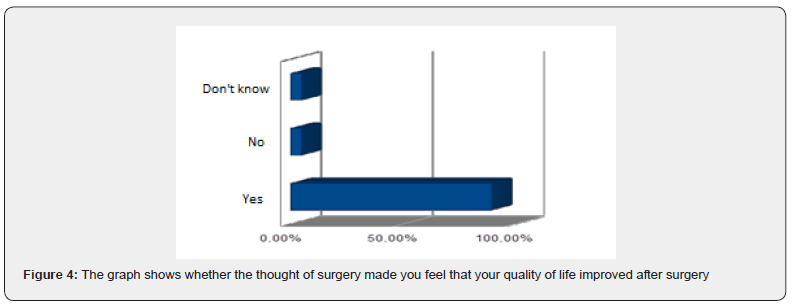


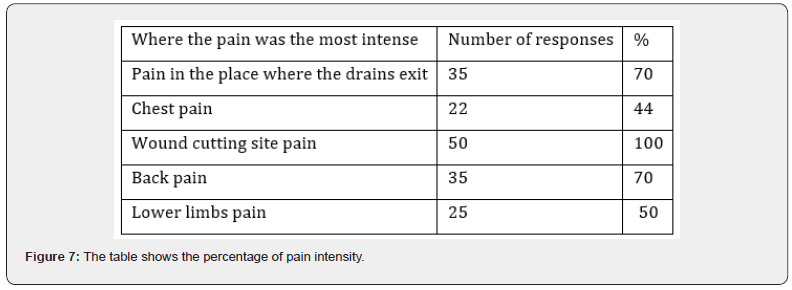
Numerous studies show that most often, as in our work, that:
The indicated areas of pain after surgery are the medial part of
the chest, i.e. the area of the postoperative wound, the area where
the mediastinal and pleural drains are introduced. The group of
respondents stated that the operation would improve their quality
of life. There was no evidence of an increase in the drug after
surgery despite pain. High doses of drugs used in cardiac surgery
and the need for deep anesthesia reduce the level of anxiety due
to pain. The group of subjects required the use of higher doses
of pain medications. When the pain was stronger, respondents
reported the need for a higher dose of pain medication. The variety
of methods used to relieve pain and the techniques used were not
effective enough. Pain therapy is based on the close collaboration
of an interdisciplinary team. A nurse may give you a pain reliever
as needed. In the first few days, the painkiller is administered on
medical prescription, according to the hours indicated; in case of
prolonged acute pain, the rescue dose should be adjusted. The
drug should be administered by the most convenient route for the
patient, in the case of cardiac surgery patients it is usually central
access. The selection of agents should consider the analgesic
ladder, ranging from the less active drug to the more potent drugs
[28,29].
Pain in almost 90% of respondents caused unknown fear.
Anxiety is a sensation that can be attributed to a high level of
negative affect and a fear of possible danger or threat and a feeling
of being unable to predict and control them. Trait anxiety can be
viewed as a motive or acquired behavioral disposition through
which an individual may perceive non-threatening situations
as threatening, thereby reacting to them with drug states that
are not actually equivalent to them. The tendency to anxiety
reactions may cause higher levels of anxiety and depression in
the perioperative period. Pain can be a sensitive, early sign of
fear, especially in patients who have undergone cardiac surgery.
Preoperative fear associated with the procedure, awareness of
possible complications, general anesthesia and the patient’s
mental attitude increase the anxiety. Pain sensations after the
procedure increase anxiety in a large number of patients, which
contributes to the intensification of anxiety or fear, which results
in an extended recovery time. With each scale, we can evaluate
pain after cardiac surgery. The VAS scale positively correlates
with each other in zero and in the following days the possibility
of assessing pain. An important point is pain monitoring in the
intensive care unit is possible with all pain characteristics.
Post-operative pain impairs cognitive processes and limits
the possibility of performing physiotherapeutic procedures.
Weakened mental functioning extends the recovery period and,
after surgery, deteriorates functioning. Currently, the best-known
risk factors for disturbance of consciousness are old age, previous
stroke, renal failure, obliterating arteriosclerosis of the lower
extremities, and somatic stresses such as atrial fibrillation. The
study showed that patients diagnosed with palliative disease are
very sensitive to acute pain caused by surgery. Severe pain occurs
in 30% of them and in more than half of patients there is pain that
requires above-standard treatment.
The conducted studies of behavioral pain assessment in
cardiac surgery patients indicate that the overall health condition
of the patient should be taken into account in the assessment
of pain. Analysis of the collected data provided information on
the use of pain medications, pain assessment, and how patients
cope with emotions after cardiac surgery. A significant part of the
respondents experienced chronic pain of a significant degree, and
the number of these people increased significantly with the age of
the respondents.
Cardiac surgery procedures are a type of large and very
extensive procedures. The duration of the treatments, the way
they are performed, and pharmacotherapy have a great impact
on the patient’s condition. Pain after cardiac surgery is one of the
strongest postoperative pains. Pain requires a large contribution
of medical personnel and a large amount of pharmacotherapy
to improve the patient’s feelings. More pain medications are
sometimes needed to improve the quality of life of patients after
cardiac surgery and to relieve pain.
In our study, pain was examined on the 4th day after surgery,
where severe pain was found in a significant number of patients.
7/10 Failure to treat it causes a number of complications,
including unsuccessful surgery. Pain is also influenced by the
extent of the procedure and the degree of tissue cutting [2]. We
believe that the studied group of palliative patients is especially
prone to pain due to the specificity of end-stage disease. Although
few people die of pain, many die in pain and still more live in pain.
The psychological perception of a stimulus consists of four closely
related stages. The first and second stages can be assessed using
simple scales, for example the VAS visual-visual scale. The first
stage is a sensory-discriminatory experience, which in the second
stage causes a distress reaction with a small share of cognitive
functions. The third stage is suffering, which is a more complex
phenomenon related to the patient’s views on pain, including
complex reactions such as depression, anxiety, anger. This
stage is shaped by personality traits, ways of coping with pain,
experiences. The fourth stage is the behavioral expression of pain,
otherwise known as the pain behavior. It is determined by motor
efficiency and daily activities [10].
Nowadays, we can observe an upward trend in the willingness
to learn about the possibilities of analgesic therapy before
surgery. This reduces stress levels, anxiety and the occurrence
of depression. In our study, the patients were aware that
pain medications could be used to prevent pain. Most of the
patients expected them not to be hurt. In the further part of the
questionnaire, it can be stated that patients report pain after
surgery, and thus one of the factors hindering recovery is the
feeling of pain in various parts of the body. Difficult contact with
the patient causes mood swings, disturbances of the circadian
rhythm, delayed convalescence. Most of the answers were
affirmative [26]. On the other hand, 10% of respondents stated
that they did not experience postoperative pain.
It was shown that the occurrence of pain significantly limited
the possibilities of rehabilitation. According to the literature, this
has a significant impact on the recovery period after surgery.
The study considers that the use of early rehabilitation shortens
the postoperative period and reduces the number of pulmonary
complications. The main task of cardiac rehabilitation is to
consolidate the results of conservative, interventional or surgical
therapy by stopping the disease progression, restoring the lost
psychophysical fitness and facilitating the return to active life
[20]. Due to the modern surgical techniques currently used, the
performance of procedures in increasingly elderly people, who
were previously disqualified due to the high risk of surgery, more
and more patients require rehabilitation [21,22]. Patients qualified
for cardiac surgery differ in the degree of risk. One group consists
of elderly patients with multivessel lesions, concomitant diabetes
mellitus and symptoms of heart failure. The second group consists
of patients with lower risk, young people with isolated, but not
eligible for angioplasty, lesions in the coronary vessels, without
heart failure and comorbidities. It is associated with a different
preparation of the patient for surgery, the risk of the surgery itself
and postoperative treatment, including rehabilitation [23].
In the perioperative period, the most important improvement
procedure is the activation of the mechanisms of proper lung
ventilation by breathing exercises: 4-track (upper costal, lower
costal, diaphragmatic, left and right chest side), the bronchial
tree toilet (positional drainage, learning effective coughing
and expectoration, breathing exercises with water bottle,
flutter, etc.); placing the lower limbs from which the material
for transplantation was made in a position that facilitates the
outflow of blood; reducing the tension of the abdominal press
during isometric efforts and changes in position from lying down
to sitting and vice versa; active exercises of the upper and lower
limbs (coordination of movement with breathing); active lower
limb exercises for thromboprophylaxis; starting a sick person and
preparing for self-service; isometric and relaxation exercises [23-
25].
Working with a patient with acute pain and palliative disease
requires professional knowledge of how to relieve pain, support
and demonstrate understanding in proportion to the patient’s
condition. The interdisciplinary team must be aware that physical
suffering affects the mental sphere [17]. Therefore, as pain after
cardiac surgery is one of the most severely felt types of pain,
especially in the first few days, treatment should be started to
relieve pain as effectively as possible until full consciousness is
regained upon recovery from general anesthesia. Opioids (mainly
morphine, tramadol) and drugs such as paracetamol, pyralgine,
and ketoprofen are the best [18,19].
The nurse’s participation in the treatment of postoperative
pain is based on her preparation for the care of a pain patient.
In Poland, such patients may be cared for by nurses who have
completed a qualification course or specialization in anesthetic
and intensive care nursing, or a specialist course in acute pain
therapy in adults. Education increases knowledge about pain
and encourages patients to participate in pain management. It
should cover analgesic methods, methods of pain measurement,
establishing an analgesic action plan, and explaining the
importance of honesty in pain assessment and treatment for
overall therapy success [14,15]. Assessing acute pain care is
difficult because pain is a subjective symptom that people
perceive differently. After surgery, insufficiently treated pain may
cause prolonged suffering, rehabilitation, aggravate depression
and anxiety, and affect the occurrence of postoperative delirium;
it may increase the number of complications [16].
The analysis of the collected results and the
conducted
research led to the following conclusions. In our work, severe
postoperative pain occurred on the fourth day after the surgery
in palliative patients undergoing cardiac surgery. We believe that
palliative patients are more prone to pain than the group of patients
without comorbidities. The pain concerned the operated site,
especially the chest, and it was shown that the occurrence of pain
significantly limited the possibilities of rehabilitation, especially
increasing the risk of pulmonary complications. Monitoring
and assessment of pain in the postoperative department is
possible using the VAS scale. The conducted studies allow for the
behavioral assessment of pain in patients after cardiac surgery, it
has been shown that the pain did not change the level of the drug
after surgery in palliative patients.
To Know more about Palliative Medicine & Care
Click here: https://juniperpublishers.com/index.php
